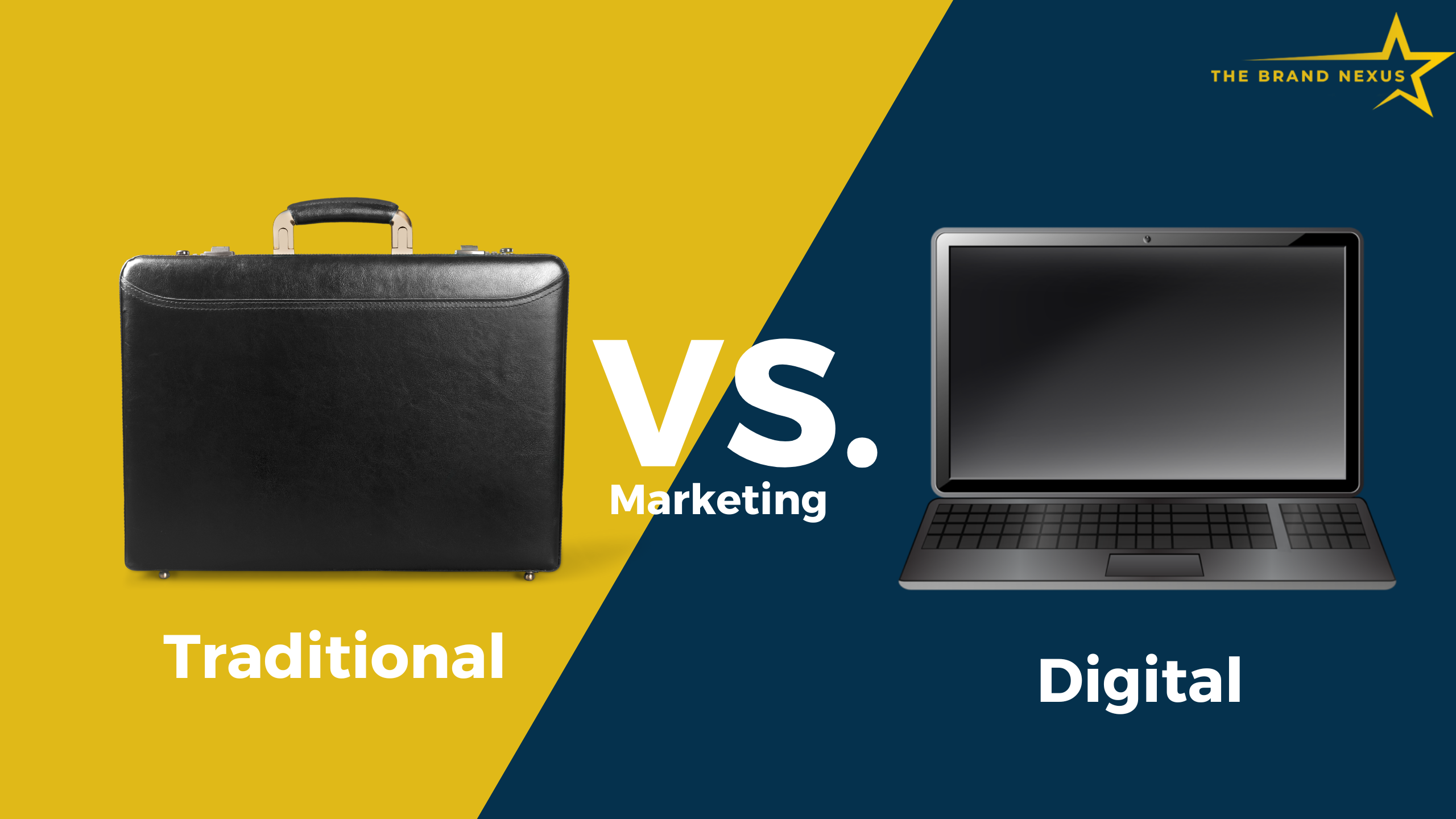In today’s competitive business landscape, effective marketing plays a pivotal role in driving growth and success. With the rise of digital technologies, businesses now have access to a wide array of marketing channels and strategies. This blog post aims to shed light on the key differences between digital marketing and traditional marketing, and how businesses can leverage these approaches to achieve their marketing goals. As a leading digital marketing company in India, we understand the importance of staying up-to-date with the latest marketing trends. Let’s explore the advantages and considerations of both traditional and digital marketing.
Traditional Marketing: Harnessing Traditional Channels’ Strengths
Traditional marketing refers to traditional channels such as print media, television, radio, billboards, and direct mail. While digital marketing has gained prominence, traditional marketing still offers unique advantages:
- Wide Audience Reach: Traditional marketing channels can reach a broad audience, especially through television and radio advertisements or newspaper inserts. This can be beneficial for businesses with a diverse target market.
- Tangibility and Credibility: Traditional marketing collateral, such as brochures or flyers, offers a physical presence that digital marketing may lack. These materials can create a sense of credibility and trust in the brand.
- Local Market Penetration: For businesses targeting a specific geographic area, traditional marketing channels like local newspapers or radio stations can effectively reach the local community.
- Brand Awareness and Recall: Traditional marketing channels, such as billboards or TV commercials, can create strong brand awareness due to their wide exposure and potential for high recall.
Digital Marketing: Embracing the Power of the Digital Age
Digital marketing encompasses various online strategies and tactics that leverage digital platforms to reach and engage target audiences. As the world becomes increasingly connected, businesses are recognizing the immense potential of digital marketing. Here are some key benefits:
- Targeted Audience Reach: Digital marketing enables precise targeting based on demographics, interests, behavior, and more. With tools like Google Ads, social media advertising, and email marketing, businesses can reach their desired audience more effectively.
- Cost-Effective: Compared to traditional marketing channels, digital marketing often offers a more cost-effective approach. It allows businesses to optimize their budget by targeting specific segments, measuring performance, and making data-driven adjustments.
- Measurable Results: Digital marketing provides real-time analytics and insights, allowing businesses to monitor campaign performance, track conversions, and measure return on investment (ROI). This data helps in refining strategies and improving outcomes.
- Enhanced Interactivity: Digital marketing enables two-way communication with customers through social media, blogs, and interactive content. Engaging with the audience builds brand loyalty, trust, and fosters long-term relationships.
Choosing the Right Approach:
The choice between digital marketing and traditional marketing depends on various factors, including the target audience, budget, marketing objectives, and industry. In many cases, a blend of both strategies can yield optimal results. Here are a few considerations:
- Understand Your Target Audience: Analyze your target audience’s demographics, behaviors, and preferences. This will help determine which marketing channels will be most effective in reaching and engaging them.
- Define Clear Marketing Objectives: Set specific goals for your marketing campaigns, such as increasing brand awareness, generating leads, driving website traffic, or boosting sales. Align your marketing approach with these objectives.
- Analyze Budget and Resources: Evaluate your budget and available resources. Digital marketing often provides more flexibility and cost-effectiveness, but traditional marketing can still be valuable for certain businesses.
- Embrace an Integrated Approach: Consider integrating digital and traditional marketing efforts to create a cohesive and comprehensive marketing strategy. Leverage digital channels to amplify the reach and impact of traditional marketing campaigns.
Conclusion:
In today’s digital age, businesses have a wide range of marketing options to choose from. While digital marketing offers targeted reach, cost-effectiveness, and measurable results, traditional marketing channels still hold value, especially for specific industries and target markets. As a leading digital marketing company in India, we understand the significance of both approaches and can help businesses craft tailored strategies to achieve their marketing goals. Ultimately, the key lies in understanding your target audience, defining clear objectives, and leveraging a blend of digital and traditional marketing channels for maximum impact and success.

